
The Geometry of a Golden Kiss
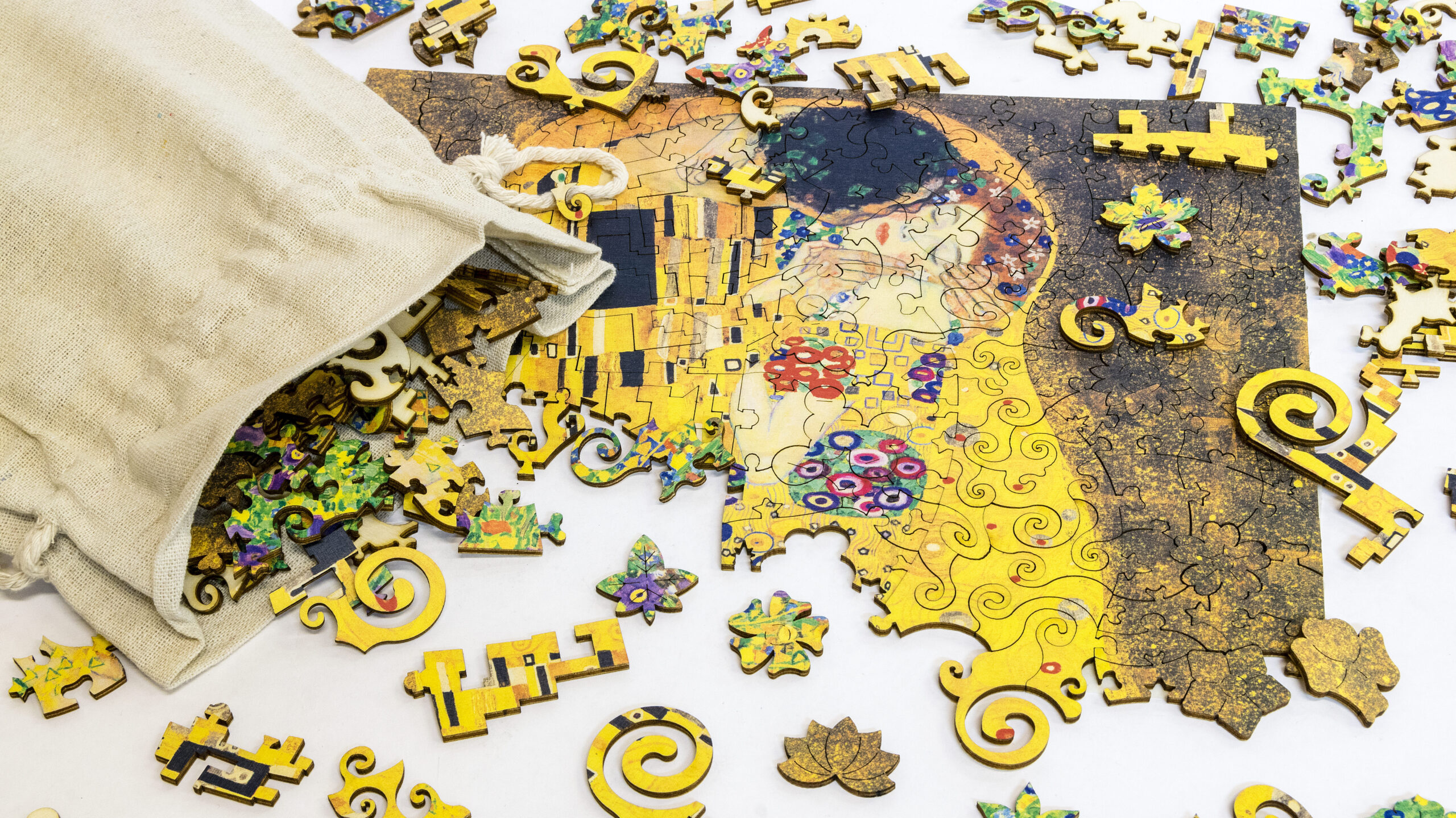
Klimt’s success
Gustav Klimt is one of the leading representatives of art in late 19th-century Vienna. His artistic inclinations were evident from an early age, and his talent was rewarded when, as a boy, he won a scholarship to study at the Vienna School of Arts and Crafts.
Following several important commissions, Klimt received the Golden Order of Merit from Emperor Franz Joseph I. He thus became an honorary member of the universities of Munich and Vienna, and his standard of living was more affluent.
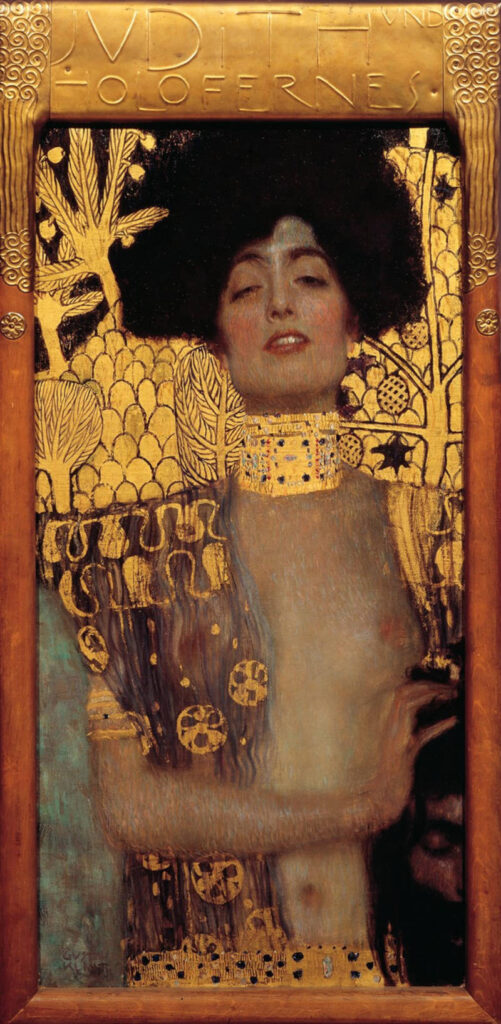
After the deaths of his father and brother, Klimt’s style turned decisively toward Symbolism and Impressionism. Later, during a trip to Europe, he became better acquainted with gold inlay work and experimented with it in his works. The influence of Byzantine mosaics that the artist had been able to see in Ravenna proved fundamental in Klimt’s work. The female figure, sensuality and gilding became the main elements of his style. It was beginning with Judith I that Klimt began to decorate all his works with gold leaf. This feature made him one of the major exponents ofArt Nouveau.
The iconic Kiss
In The Kiss, applied gold leaf is the key motif that places the work among the masterpieces of the painter’s so-called Golden Age. In the painting, Klimt enriches the extremely human subject by using contrasts of tone and color and an exaggerated use of geometric and floral motifs.
The two embracing lovers are represented as two complementary forms, two opposite personalities meeting and complementing each other.
The man wears a gold tunic decorated with black and white rectangles, while the woman’s robe is adorned with colored spirals and circles.
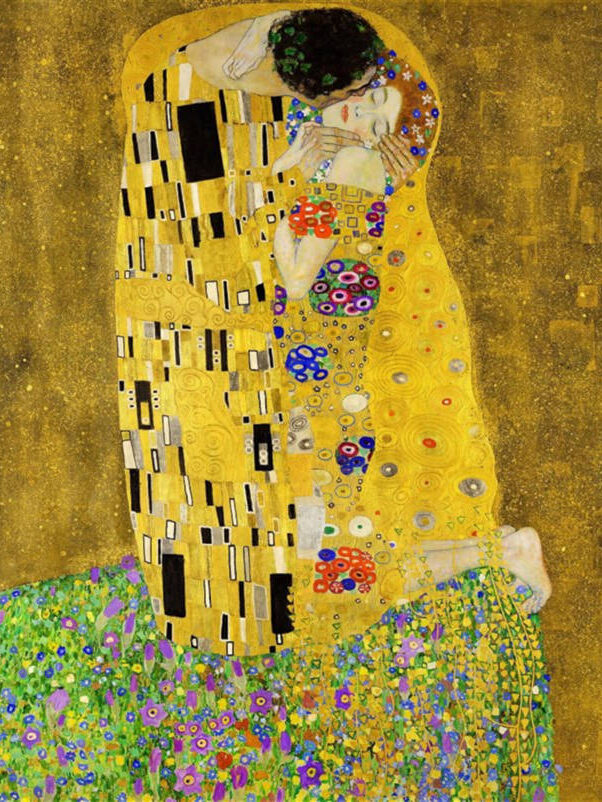
Klimt’s The Kiss is one of the most reproduced paintings in art history and has appeared over the years in hundreds of different ways. Austria itself minted a commemorative coin representing the image of the work and its author.
The puzzle with special tiles
For us, the Kiss was inspiration for one of our wooden puzzles. The path of cutting the tiles came to life almost naturally, following the shapes and decorations included in the painting. All special pieces faithfully refer to the pictorial features of the work and certain details repeated on the canvas that acquire decorative and symbolic character.
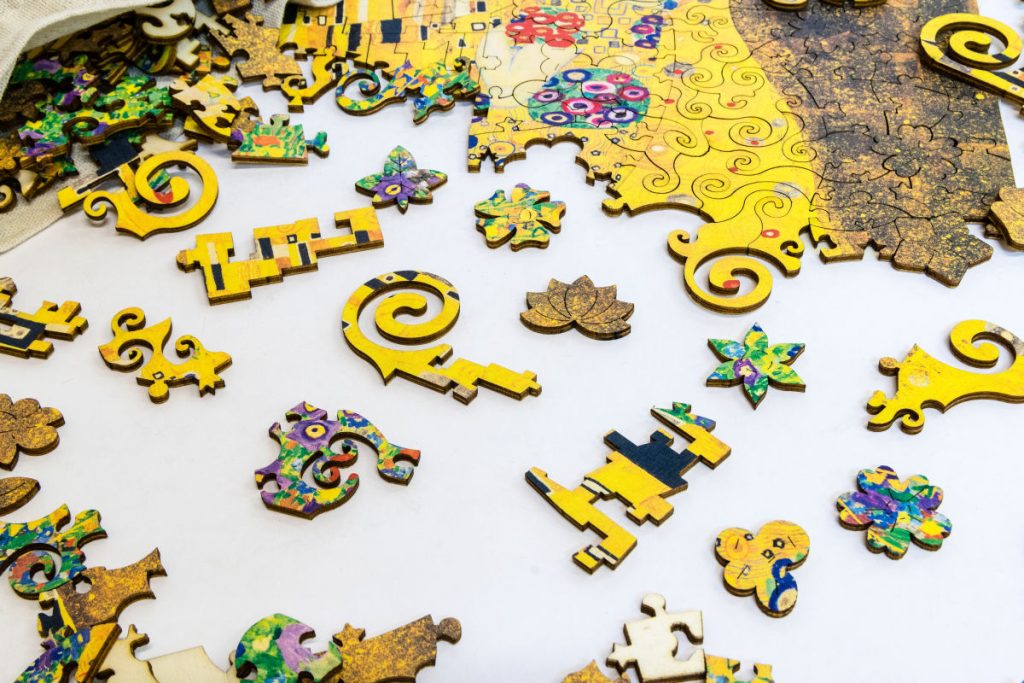
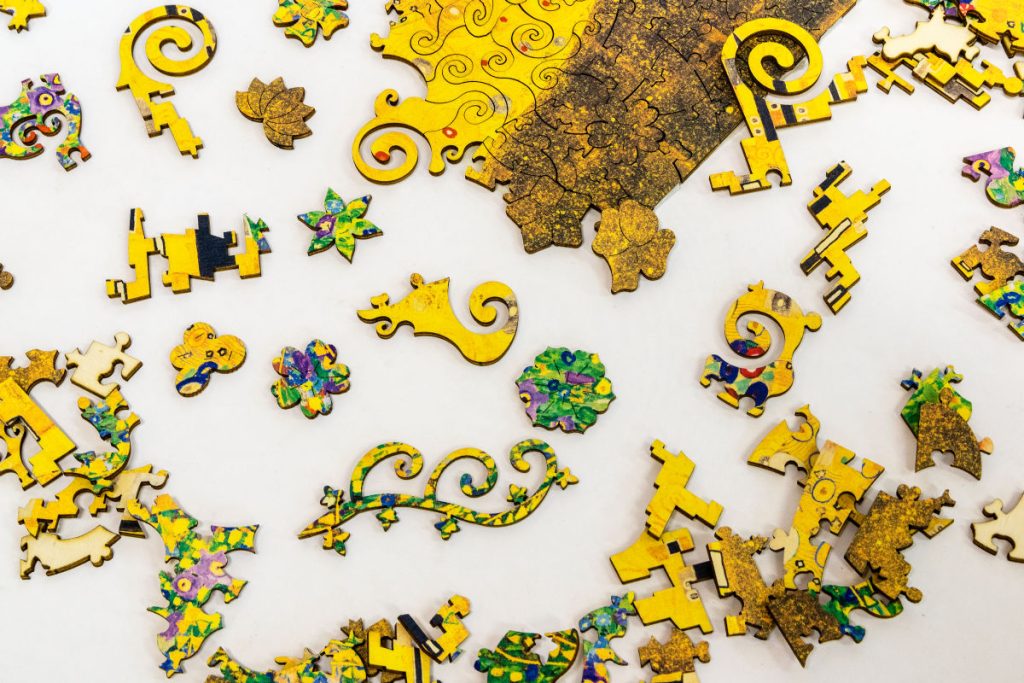
In fact, the tiles have the stylized and geometric shapes of the man and woman’s clothes. Some are inspired by the naturalistic and floral motifs of the base on which the two lovers indulge. Each piece of the puzzle reflects and emphasizes Klimt’s highly original and creative style, which is always highly recognizable.

